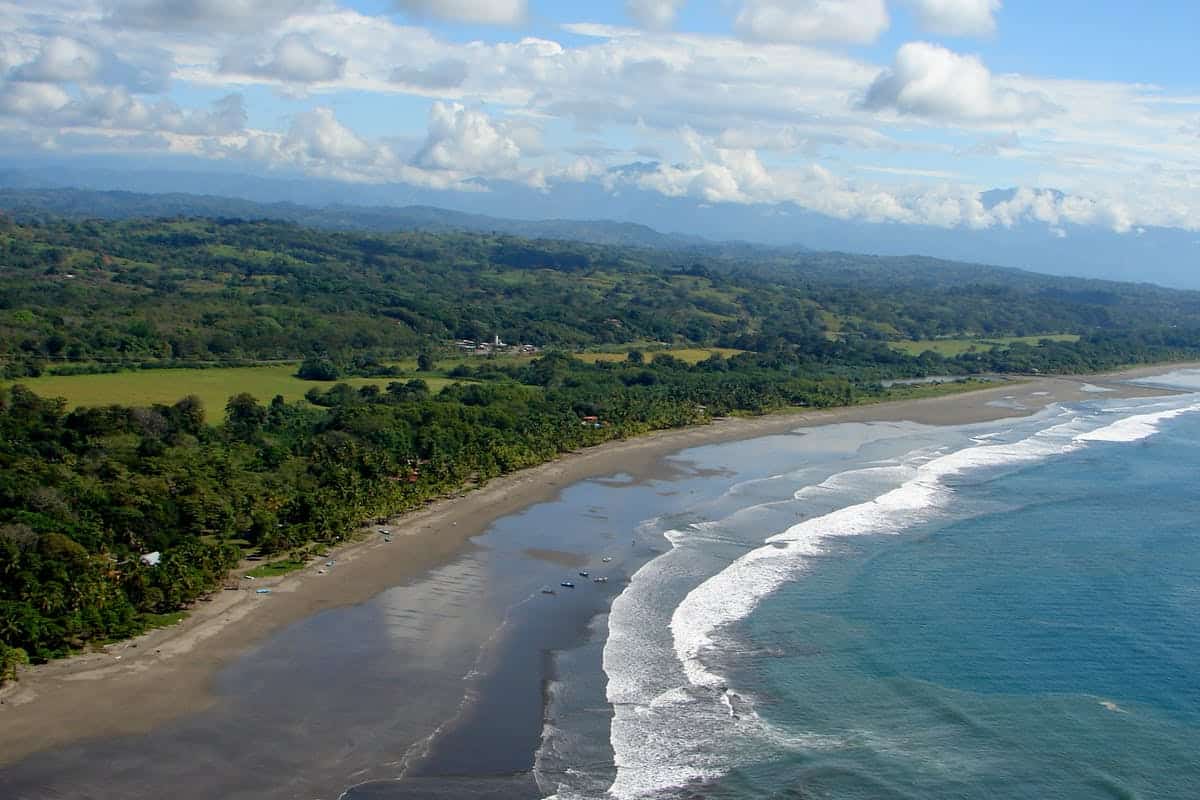Parrita, a small town on Costa Rica’s central Pacific coast, has long been overshadowed by its flashier neighbors like Manuel Antonio and Jacó. Most travelers zip through, catching glimpses of palm plantations from car windows on their way to better-known beaches. But Parrita is no longer just a pitstop for gas and snacks. Local businesses, community leaders, and eco-conscious operators have teamed up to put this understated destination on the map. With luxury beachside stays, adrenaline-pumping activities, and wildlife-rich forests, Parrita is carving out its own identity as a place to linger, not just pass through.
Why Parrita’s Worth a Stop
Tucked between sprawling African palm plantations and the Pacific, Parrita offers a slower pace than its tourist-heavy neighbors. The town itself is modest, with local eateries serving up gallo pinto and fresh ceviche, but its surrounding areas—think Palo Seco Beach and Rainmaker Park—pack a punch. You’ll find high-end resorts, adventure sports, and ecological tours that let you explore Costa Rica’s biodiversity without the crowds. Parrita’s charm lies in its balance: it’s got enough to keep you busy, but it still feels like a secret.
Luxury Resorts and Laid-Back Stays
Parrita’s accommodation scene has leveled up in recent years. Beachfront properties like Clandestino Beach Resort offer boutique luxury with teak wood rooms, palm-thatched roofs, and direct access to Palo Seco’s 10-km stretch of coconut-lined shore. Guests rave about the serene vibe and ocean views, though some note the gravel road access can be bumpy. For a more budget-friendly option, vacation rentals near Esterillos Beach provide private pools and easy beach access, perfect for families or groups.
Alma del Pacifico Beach Hotel and Spa in Playa Esterillos stands out for its colorful villas, spa services, and beachfront dining. It’s a solid pick for couples wanting a romantic escape with sunset cocktails. Many of these spots emphasize sustainability, using local materials and supporting nearby communities, aligning with Costa Rica’s eco-tourism ethos.
Adventure Sports
Parrita’s adventure offerings rival those of bigger destinations. Sky Mountain Zip Lines, part of the Creando Naturaleza reserve, delivers one of the Pacific coast’s longest canopy tours. Picture yourself gliding over 6,000 feet of steel cables, suspended above treetops with views stretching to the horizon. The setup includes sturdy steel platforms, and guides keep things safe while serving up fresh pineapple and cold drinks post-ride. It’s thrilling yet accessible, whether you’re a first-timer or a zip-line pro.
Beyond zip-lining, Parrita caters to adrenaline junkies with ATV tours through rainforests and along waterfalls, horseback riding on secluded beaches, and kayaking in the Damas Island estuary. Surfing is big here, too, with Esterillos and Palo Seco beaches offering consistent waves for beginners and pros alike. For a unique twist, try paragliding over Palo Seco for jaw-dropping aerial views. These activities are often paired with nature tours, so you might spot monkeys or macaws while tearing through the jungle.
Wildlife and Ecological Tours
Parrita’s natural assets shine in its ecological tours, particularly at Rainmaker Conservation Project. This 600-hectare private reserve, just off the highway between Parrita and Manuel Antonio, is a haven for wildlife. Its network of hanging bridges—some swaying 50 meters above the Río Seco—offers a treetop perspective on primary rainforest. Guides point out poison dart frogs, three-toed sloths, and blue morpho butterflies, while sharing insights on the forest’s ecosystem. The reserve made headlines when scientists rediscovered the harlequin frog, thought extinct since 1996, highlighting its conservation importance. Tours include a dip in a waterfall-fed pool and meals at an open-air dining area.
The Damas Island estuary is another gem for wildlife lovers. Kayak or boat through mangrove channels to spot white-faced capuchin monkeys, crocodiles, and herons. These tours, often private or small-group, emphasize sustainable practices, ensuring minimal impact on the environment. For a deeper dive into local culture, the Spice Farm Tour near Parrita lets you explore organic agriculture and sample tropical fruits like mango and papaya.
Practical Tips for Visiting Parrita
- Getting There: Parrita is about a two-hour drive from San José via a scenic highway. Renting a car is recommended for flexibility, as public buses are limited.
- When to Go: December to February offers dry weather but higher prices. For deals, visit during the rainy season, when crowds thin out.
- Language: English is common but basic Spanish phrases help with locals. Try “¿Dónde está la playa?” (Where’s the beach?) to break the ice.
- Food: Don’t miss casado, a hearty plate of rice, beans, plantains, and your choice of meat. Local sodas (small restaurants) serve it cheap and fresh.
- Sustainability: Choose operators with eco-certifications, like those recognized by Costa Rica’s Certification for Sustainable Tourism, to support conservation.
Why Parrita Stands Out
Parrita isn’t trying to be Manuel Antonio, and that’s its strength. It offers the same biodiversity and adventure but with a quieter, more authentic feel. The town’s push to attract tourists has paid off, with new tours and upgraded resorts making it a viable base for exploring the central Pacific. Whether you’re zipping through the canopy, kayaking among mangroves, or sipping coffee at a beachfront villa, Parrita delivers experiences that stick with you. Next time you’re planning a Costa Rica trip, give this underdog a chance—you might find it’s the highlight of your visit.






